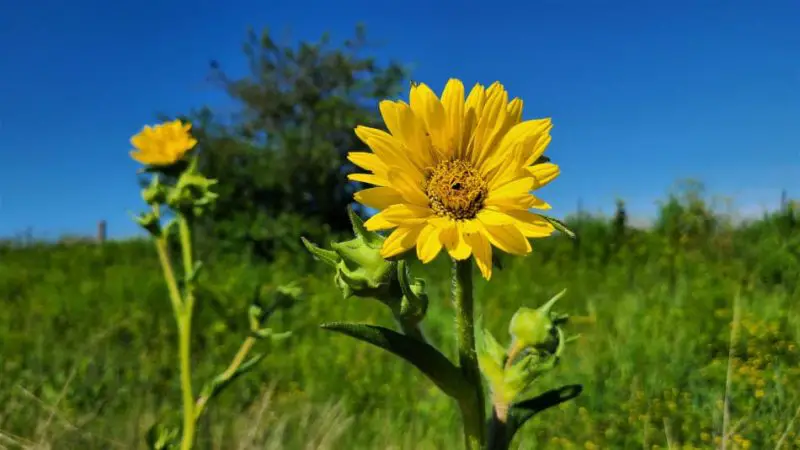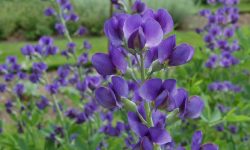The Compass Plant, with its towering stalks and radiant yellow blooms, is a true symbol of the American prairie. Known for orienting its leaves north to south, this unique perennial not only adds drama and height to gardens but also provides a fascinating glimpse into nature’s adaptation. Its deep taproot makes it remarkably drought-tolerant, allowing it to flourish even in challenging conditions.
Beyond its striking appearance, Compass Plant offers ecological value by attracting bees, butterflies, and birds throughout the growing season. Gardeners who nurture this plant enjoy both beauty and biodiversity in their landscapes. Learning how to care for Compass Plant properly ensures it thrives year after year, standing tall as a bold focal point. With the right guidance, you can cultivate this prairie native into a long-lasting treasure for your garden.
Understanding the Compass Plant’s Natural Habitat

The Compass Plant originates from the tallgrass prairies of North America, where it thrives in open, sun-drenched landscapes with well-drained soils. Its natural environment is characterized by hot summers, cold winters, and limited water availability, all of which shaped its adaptations for survival. The plant develops an extensive taproot system that can reach depths of 15 feet, allowing it to access deep soil moisture and withstand drought.
Recognizing its prairie heritage helps gardeners provide the right growing conditions. The Compass Plant performs best in sunny locations where it can receive at least six to eight hours of direct sunlight daily. While it tolerates poor soils, it flourishes in sandy loam enriched with organic matter. Its strong drought tolerance means that, once established, it requires minimal supplemental water, making it an excellent choice for low-maintenance or xeriscape gardens.
By replicating its natural prairie habitat in your garden, you create an environment where the Compass Plant can thrive for decades. Give it plenty of space to spread, as mature plants can grow six to ten feet tall and form wide clumps. With the right site and growing conditions, you’ll enjoy both the plant’s ornamental appeal and its ecological role as a pollinator magnet and native habitat supporter.
Choosing the Best Location for Planting
Selecting the right location for your Compass Plant is the foundation of successful growth. Because of its tall, architectural form, this perennial is best placed in the back of borders, wildflower meadows, or open prairie-style gardens. A site with full sun exposure is essential, as the plant’s large, lobed leaves orient themselves vertically to reduce water loss and maximize sunlight efficiency. Shady locations lead to weaker stems and reduced flowering.
Soil type also influences growth. Although Compass Plant is highly adaptable, it prefers moderately fertile soil that drains well. Heavy clay soils can restrict root development and cause waterlogging, while excessively sandy soils may require the addition of compost to retain adequate moisture. Once established, the plant’s deep root system anchors it firmly, making it highly resistant to strong winds and capable of enduring long dry periods.
Another factor to consider is spacing. Each Compass Plant needs several feet of space to accommodate its spread and deep root growth. Crowding it with other tall plants may lead to competition for sunlight and nutrients. When thoughtfully placed, however, the Compass Plant becomes a bold focal point in the garden, harmonizing with other native perennials and providing a vertical accent that stands out through every season.
Soil Preparation for Healthy Growth
Preparing the soil is one of the most important steps in caring for Compass Plant. This perennial thrives in soils that are loose, well-drained, and rich in organic matter. Before planting, loosen the soil to a depth of at least twelve inches to encourage early root development. Mixing in compost or well-rotted manure enhances fertility and improves soil texture, creating the ideal conditions for strong growth.
Because Compass Plant develops an extremely deep taproot, it is best to choose a location where the soil will not be disturbed in the future. Avoid compacted or heavy clay soils, as they restrict water movement and prevent root penetration. If your soil is dense, consider amending it with coarse sand or small gravel to improve drainage. Over time, the plant will adapt to poor conditions, but initial preparation helps establish a vigorous foundation.
Maintaining proper soil structure also reduces disease risks and improves long-term plant health. Mulching with organic material around the base conserves moisture while suppressing weeds that might compete for nutrients. As the Compass Plant matures, it becomes increasingly self-sufficient, but the effort you put into preparing the soil early on will ensure decades of growth, resilience, and abundant blooms.
Planting Compass Plant Successfully
Planting Compass Plant requires patience and attention, as this perennial is slow to establish but rewards gardeners with decades of beauty once settled. The best time to plant is in early spring or early fall, when temperatures are moderate and the plant can develop roots without stress. Space individual plants at least three to four feet apart to provide enough room for mature growth.
Seeds can be sown directly into prepared soil, but germination may be slow and irregular. Stratification, or exposing seeds to a period of cold, often improves results. If starting with young transplants, handle them carefully to avoid damaging the developing taproot. Once planted, water deeply to encourage roots to extend into the soil, but avoid oversaturation.
During the first year, the Compass Plant may not produce flowers as it focuses energy on root development. Do not be discouraged by slow top growth, as the plant is investing in the deep, strong foundation needed for future resilience. By the second or third year, you can expect tall stems and bright yellow blooms that become a defining feature in your garden landscape.
Watering Needs for Compass Plant
Watering is an essential aspect of caring for Compass Plant, especially during its early establishment years. In the first season after planting, provide consistent moisture to encourage strong root growth. Deep watering once or twice a week ensures that water penetrates the soil and reaches the developing taproot. Shallow, frequent watering is less effective and can even weaken the plant by encouraging surface roots rather than deep anchoring roots.
Once established, Compass Plant is remarkably drought-tolerant thanks to its extensive root system. In most climates, natural rainfall is sufficient to sustain growth. However, during prolonged dry spells in summer, occasional deep watering supports flower production and keeps foliage looking lush. Applying mulch around the base conserves soil moisture while reducing the frequency of watering needed. This practice also prevents the soil from overheating and improves long-term plant resilience.
Overwatering should be avoided, as soggy soil can lead to root rot and fungal problems. The best method is to check the soil moisture before watering—if the top few inches are dry, a deep soak will be beneficial. By following these practices, you provide just the right balance of hydration, ensuring that Compass Plant remains strong, resilient, and visually impressive season after season.
Fertilizing Strategies for Compass Plant
Compass Plant does not require heavy fertilization, as it is naturally adapted to the nutrient levels of prairie soils. However, modest feeding can enhance growth and encourage more prolific flowering. In early spring, applying a thin layer of compost or well-rotted manure around the base delivers a slow release of nutrients while improving soil structure. This organic approach supports healthy development without overwhelming the plant.
For gardeners seeking to boost flower production, a balanced, slow-release fertilizer with equal parts nitrogen, phosphorus, and potassium can be applied in spring. Too much nitrogen should be avoided, as it encourages leafy growth at the expense of blooms. A single application per year is usually sufficient, given the plant’s deep-rooted ability to access nutrients stored in the soil profile. This conservative fertilization mirrors the plant’s natural habitat and prevents unnecessary intervention.
In poor soils, supplementing with natural amendments such as bone meal or compost tea can also help. These additions provide phosphorus for root strength and potassium for strong flowering. By focusing on light, well-timed fertilization, you maintain a healthy Compass Plant that balances leafy vigor with showy, pollinator-attracting blooms. This method ensures sustainability while preserving the plant’s natural hardiness.
Pruning Compass Plant for Health and Beauty
Pruning Compass Plant is a straightforward process that helps maintain its health and enhance its appearance. In spring, pruning is minimal—simply remove any dead or damaged stems to clear space for new shoots. This cleanup encourages healthy growth while reducing the risk of pests and diseases. Because the plant puts much of its energy into root development, heavy pruning during this time is unnecessary.
During summer, deadheading spent flowers can extend the blooming period and keep the plant looking tidy. Removing faded blooms also prevents unwanted self-seeding if you prefer to control the spread of Compass Plant. Tall stems rarely need cutting back midseason unless they become damaged by wind or storms. Light maintenance pruning at this stage helps retain the plant’s natural architectural form while supporting strong, upright growth.
Fall is the main season for pruning Compass Plant. Once frost has blackened the foliage, cut back stems to a few inches above ground. This prevents pests from overwintering and reduces garden clutter. Some gardeners prefer leaving a portion of dried stalks standing for wildlife support and winter interest. By timing your pruning carefully throughout the year, you ensure that Compass Plant remains vigorous, attractive, and ready to flourish again in spring.
Seasonal Care for Compass Plant
Spring Care for Compass Plant
Spring is the season of renewal for Compass Plant, and giving it the right start sets the tone for the rest of the year. As soon as temperatures warm, remove old stems and debris from around the base to prevent pests and fungal diseases. This cleanup also exposes the soil to sunlight, which encourages new shoots to emerge quickly. Adding a thin layer of compost or organic mulch at this time provides gentle nutrition and maintains soil moisture.
In early spring, watering should be consistent but moderate. Newly emerging plants benefit from evenly moist soil, though it should never remain soggy. Checking for crowding from weeds or other fast-growing plants is important, as young Compass Plant shoots need space and sunlight. By creating these supportive conditions in spring, you prepare the plant to develop strong stems and prepare for tall, impressive growth during the summer months.
Summer Care for Compass Plant
Summer is the peak season for Compass Plant, as tall stems and bright yellow flowers dominate the garden. During hot weather, watering deeply once every one to two weeks encourages roots to access moisture far below the surface. While this plant is drought-tolerant, occasional deep watering ensures that flowers remain vibrant and do not fade prematurely. Mulching around the base conserves soil moisture and keeps weeds at bay during long, hot spells.
Because of its towering height, Compass Plant may sometimes require staking to keep stems upright, especially in windy areas. Removing spent flowers can extend the blooming period and keep the plant looking tidy. Pollinators such as bees and butterflies are highly active during this season, making the Compass Plant a valuable ecological centerpiece. With attentive summer care, your plant will thrive even under the toughest heat.
Fall Care for Compass Plant
Fall is the season when Compass Plant begins to slow down and prepare for dormancy. During this time, it is best to let the flowers fade naturally, as the seed heads provide food for birds and help with self-seeding. Leaving some stems intact adds seasonal interest to the garden, giving structure and movement with their tall, drying stalks swaying in autumn winds. This also creates a valuable habitat for beneficial insects that rely on dried stems for shelter during cooler months.
As temperatures cool, reduce watering gradually since the plant is no longer actively growing. Cutting back most of the stems after the first frost helps maintain garden tidiness and prevents pests from overwintering in dead plant material. At the same time, avoid disturbing the crown or root system, as the plant stores energy in its deep taproot to survive winter. Applying a light mulch layer can protect roots from sudden temperature shifts. With careful fall preparation, the Compass Plant enters dormancy strong, ensuring healthy regrowth and vibrant blooms when spring returns.
Winter Care for Compass Plant
In winter, Compass Plant requires little active maintenance because of its natural hardiness. The deep taproot remains protected underground, allowing the plant to withstand freezing temperatures with minimal assistance. Gardeners in colder regions may choose to leave a layer of mulch around the base to insulate the soil and prevent extreme temperature fluctuations. This simple step helps safeguard the crown from winter damage.
Above ground, the dried stalks can be left in place for visual interest and to provide shelter for wildlife. Some gardeners prefer cutting them back entirely for a tidier appearance, but leaving them until early spring also benefits pollinators and birds. Since winter is a resting period, no fertilization or watering is necessary. By respecting the plant’s natural dormancy, you ensure that Compass Plant returns strong and resilient once spring arrives.
Pests and Diseases of Compass Plant
Common Pests Affecting Compass Plant
Compass Plant is generally resilient, but it can attract certain pests when stressed or planted in less-than-ideal conditions. Aphids are among the most common, feeding on the sap of young stems and leaves, which may cause curling or yellowing foliage. Grasshoppers are also known to chew on the broad leaves, leaving unsightly holes. In some cases, spider mites may appear during hot, dry spells, creating fine webs and weakening plant vigor. While these pests rarely kill mature plants, they can reduce growth and diminish the visual appeal of flowers.
To manage these pests, regular monitoring is key. A strong jet of water can dislodge aphids, while encouraging natural predators such as ladybugs or lacewings helps keep populations under control. For grasshoppers, handpicking or using row covers may be necessary in smaller gardens. Maintaining a balanced ecosystem and keeping the plant healthy with proper watering and sunlight significantly lowers the chances of severe infestations, ensuring Compass Plant continues to thrive.
Diseases That May Impact Compass Plant
Although hardy, Compass Plant can sometimes fall victim to diseases, especially in humid or crowded conditions. Powdery mildew is one of the most frequent problems, appearing as a white, powdery coating on leaves that reduces photosynthesis and weakens growth. Leaf spot diseases, caused by fungi, may also occur, creating dark lesions that eventually spread and cause premature leaf drop. These issues are often linked to poor airflow or overly damp soil, which provides favorable environments for fungal development.
Preventing diseases begins with proper cultural practices. Ensuring good spacing between plants improves airflow, while avoiding overhead watering helps keep leaves dry. Removing and disposing of infected plant material reduces the spread of spores. In severe cases, organic fungicides can be used as a last resort. With proactive care and attention, most disease problems remain minor and manageable, allowing Compass Plant to maintain its striking beauty and ecological benefits throughout the growing season.
Overwintering Compass Plant Successfully
Compass Plant is a long-lived perennial that naturally survives harsh winters thanks to its deep root system. However, providing some overwintering care ensures even stronger regrowth in spring. After the first hard frost, most of the above-ground foliage will die back. Cutting stems down to a few inches above the crown keeps the garden tidy and reduces overwintering sites for pests and disease.
In colder climates, applying a layer of mulch around the base helps insulate the roots from extreme temperature fluctuations. This is particularly useful in regions with little snow cover, as snow naturally protects and insulates the soil. Avoid piling mulch directly onto the crown, as this can trap moisture and encourage rot. Instead, spread it evenly in a circle around the base.
Many gardeners also choose to leave some dried stalks standing through winter. These stems provide habitat for beneficial insects and food for birds that feed on the seeds. They also add structure to the winter garden, creating visual interest against snow or frost. By balancing tidiness with ecological value, you can overwinter Compass Plant effectively while supporting local wildlife.
Propagation Methods for Compass Plant
Propagating Compass Plant can be both rewarding and challenging due to its deep taproot system. The most common method is starting from seed, as division of mature plants is nearly impossible without damaging roots. Seeds benefit from a period of cold stratification, mimicking natural winter conditions before germination. Placing seeds in moist sand and refrigerating them for thirty to sixty days improves success rates when sown outdoors in spring.
Direct seeding in prepared garden beds is a practical approach, though germination may be slow and uneven. Once established, seedlings grow deep roots during the first year, often at the expense of visible top growth. Patience is essential, as Compass Plant usually takes two to three years to reach flowering maturity. Protecting young plants from weeds and pests during this vulnerable stage helps ensure strong development.
For gardeners seeking quicker results, greenhouse propagation is possible but requires deep pots to accommodate the taproot. Transplanting should be done carefully to avoid root disturbance. While propagation takes time, the result is a hardy, long-lived perennial that thrives for decades once established. By mastering these techniques, you can expand your Compass Plant collection and enjoy its striking presence throughout your landscape.
Companion Planting with Compass Plant
Compass Plant thrives when paired with other native prairie species that complement its height and ecological value. Tall grasses such as big bluestem or switchgrass create a natural backdrop, while mid-height flowers like coneflowers and black-eyed Susans add layers of seasonal color. Together, these combinations replicate prairie habitats and encourage pollinator diversity in your garden.
Because Compass Plant blooms in mid to late summer, pairing it with early-flowering plants ensures continuous nectar sources for pollinators throughout the season. Wild bergamot, milkweed, and coreopsis are excellent companions, attracting bees, butterflies, and even hummingbirds. Their spreading growth also helps shade the soil, reducing weeds and conserving moisture.
When planning companion plantings, consider spacing carefully. Compass Plant requires room for its deep taproot and tall form, so pairing with plants that spread horizontally works best. Avoid overcrowding, as this reduces airflow and may encourage fungal problems. With thoughtful combinations, companion planting enhances the Compass Plant’s visual appeal while strengthening the overall ecological health of your garden.
Habitat and Naturalizing Tips
Creating a naturalized setting for Compass Plant enhances both garden beauty and ecological health. This species is native to tallgrass prairies, making it well-suited for wildflower meadows, prairie restorations, or large open gardens. When planted in clusters, Compass Plant creates a dramatic vertical accent that reflects its natural habitat while supporting pollinators and birds.
To encourage naturalization, allow some seed heads to mature and disperse naturally in fall. Over time, this leads to gradual expansion across the landscape, creating a self-sustaining population. Companion planting with native grasses and perennials strengthens the ecological balance by reducing weeds, stabilizing soil, and providing continuous sources of nectar and shelter. Thoughtful plant selection ensures that all species thrive together without competition.
In managed gardens, naturalizing Compass Plant requires balancing aesthetics with control. While its self-seeding habit is beneficial, regular monitoring prevents overcrowding or spread into unwanted areas. Leaving dried stalks through winter not only adds structure but also enhances habitat for beneficial insects. By replicating prairie-like conditions and encouraging gentle naturalization, gardeners enjoy a landscape that is both beautiful and ecologically vibrant.
Common Mistakes to Avoid When Growing Compass Plant
Overwatering and Poor Drainage
Overwatering is one of the most damaging mistakes when growing Compass Plant. This native perennial is adapted to withstand dry prairie conditions and naturally develops a deep taproot that searches for moisture far beneath the soil surface. When planted in soggy or poorly drained soil, excess water surrounds the root zone and creates a favorable environment for harmful fungi. This often leads to root rot, yellowing leaves, and an overall decline in plant vigor. Many gardeners who treat Compass Plant like a water-loving perennial face constant setbacks.
To avoid this issue, choose a planting site with sandy or loamy soil that drains efficiently. Adding organic matter can improve soil texture without trapping excessive water. During the first growing season, consistent but moderate watering helps young roots establish, but after that, irrigation should be minimal. Allow the soil to dry between waterings and never let water pool around the base. By understanding its natural resilience to drought, you can grow a Compass Plant that remains healthy and long-lived without being overwhelmed by fungal problems.
Planting in Shady Locations
Compass Plant is a sun-loving perennial, and growing it in shade is a frequent mistake. In low-light conditions, the plant struggles to produce its iconic tall flower stalks and bright yellow blooms. Instead, it may develop thin stems that easily bend or collapse under their own weight. Shade also interferes with photosynthesis, reducing the plant’s ability to store energy in its root system. As a result, growth slows, blooms become scarce, and the plant fails to reach its full potential.
To prevent this, always select a location with abundant sunlight. A minimum of six hours of direct sun is required, but eight or more hours will yield the best flowering results. If planted in partial shade, supplementing with reflective surfaces or strategic placement in open garden beds can help. By providing the sunny environment it craves, Compass Plant will thrive with strong stems, vibrant flowers, and impressive height, making it a standout feature in any prairie-style or pollinator-friendly garden.
Ignoring Space Requirements
Another mistake is planting Compass Plant too close to other perennials or garden features. Mature plants can reach up to nine feet in height and spread widely, overwhelming smaller neighbors. When crowded, airflow decreases, creating humid conditions that encourage powdery mildew or other fungal issues. Competition for water and nutrients can also become intense, especially since the Compass Plant’s taproot penetrates deep into the soil and dominates surrounding resources.
To ensure proper growth, give Compass Plant enough room to expand naturally. A spacing of three to four feet between plants prevents overcrowding and maintains good airflow. This spacing also highlights the plant’s bold, architectural form without forcing it to compete for resources. Adequate space allows the Compass Plant to stand tall and healthy while enhancing the visual appeal of the entire garden. By planning ahead, you avoid unnecessary problems and create a more balanced landscape design.
Cutting Back Too Early
A lesser-known mistake is cutting back Compass Plant stems too early in the season. Some gardeners, eager to keep their gardens tidy, remove stalks as soon as blooms fade. However, this practice eliminates seed heads that provide valuable food for birds and prevent natural reseeding. Early cutting also interferes with the plant’s ability to store energy, as photosynthesis in the leaves continues late into the season, strengthening the taproot for winter survival.
Instead of rushing to cut back, leave stalks standing through late fall or until after the first frost. Not only do they provide food for wildlife, but the dried stems also add texture and visual interest to the autumn garden. Once the plant has fully gone dormant, trimming can be done safely without harming its future growth. By practicing patience, you support both the long-term health of the Compass Plant and the biodiversity of your garden.
FAQ About Caring for Compass Plant
How much sun does Compass Plant need?
Compass Plant thrives best in full sun, requiring at least six to eight hours of direct light daily. Without enough sunlight, stems may weaken, flowers become fewer, and overall growth declines. Choose a bright, open space to ensure tall stalks, vibrant blooms, and a healthy root system for long-term survival.
How often should I water Compass Plant?
During its first year, water regularly to help the taproot establish deeply. Afterward, Compass Plant becomes highly drought-tolerant and needs little supplemental watering. Allow soil to dry between waterings and avoid standing water, as excessive moisture can lead to root rot and fungal issues that weaken the plant significantly.
When is the best time to prune Compass Plant?
Prune Compass Plant in late fall or early spring after it has fully entered dormancy. Removing old stems then helps prevent pests and diseases while protecting new growth. Avoid cutting back too early, since seed heads provide food for birds and stalks add structure to the autumn and winter garden.
Does Compass Plant attract pollinators?
Yes, Compass Plant is highly attractive to pollinators such as bees, butterflies, and even hummingbirds. Its tall yellow blooms provide nectar during mid to late summer, supporting biodiversity in the garden. Growing Compass Plant not only beautifies your space but also strengthens the ecosystem by offering food sources for native wildlife.
Can Compass Plant grow in containers?
Due to its massive taproot and tall stature, Compass Plant is not suited for container gardening. It requires deep soil and open space to grow properly. Attempting to confine it in a pot stunts growth and shortens its lifespan. Planting directly in garden beds or prairie-style landscapes is the best approach.
Conclusion
Caring for Compass Plant is about understanding its prairie heritage and giving it the right conditions to thrive. With deep roots and striking blooms, it rewards gardeners who provide full sun, well-drained soil, and enough space to grow freely. By avoiding common mistakes like overwatering, overcrowding, or cutting back too early, you ensure that the plant remains healthy season after season. More than just a bold ornamental, Compass Plant also supports pollinators and adds lasting structure to your garden. With patience and thoughtful care, this native perennial becomes a resilient, eye-catching centerpiece, bringing both beauty and ecological value to landscapes for years to come.






